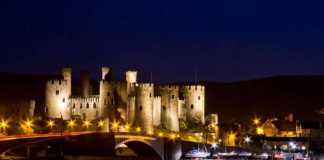One of the oldest islands of the Canary Islands, Lanzarote rose from the sea following a massive volcanic eruption more than 15 million years ago. You’d be surprised at how many exciting things to do in Lanzarote you will find. It has been inhabited since 1000 BC by the Majos tribe. Juan de Bethencourt claimed Lanzarote for Spain in 1402, after which the island saw increased activity from pirates from France and Morocco and buccaneers from Britain. The pirates raided the island for what little resources they had and made life increasingly difficult for the locals.
Both natural and historical landscape was significantly changed in 1730 when the island’s volcano, Timanfaya, erupted for six years. The ash blocked the sun and destroyed a quarter of the island. However, following the eruption, the landscape became more workable as the soil became rich and fertile, allowing for a greater number of crops to be grown.
Today Lanzarote’s primary economy comes from tourism, and it is easy to see why. The island is small, which makes it easy to explore. A car is recommended to get the most out of your stay on the island as local bus services and tours will only take you to certain locations. Lanzarote’s coastline is covered with more than 100 beautiful beaches. The beaches on the island are naturally formed from soft and silky black sand thanks to its volcanic nature, however, there are some golden-sand beaches formed using imported sands from the Sahara Desert.
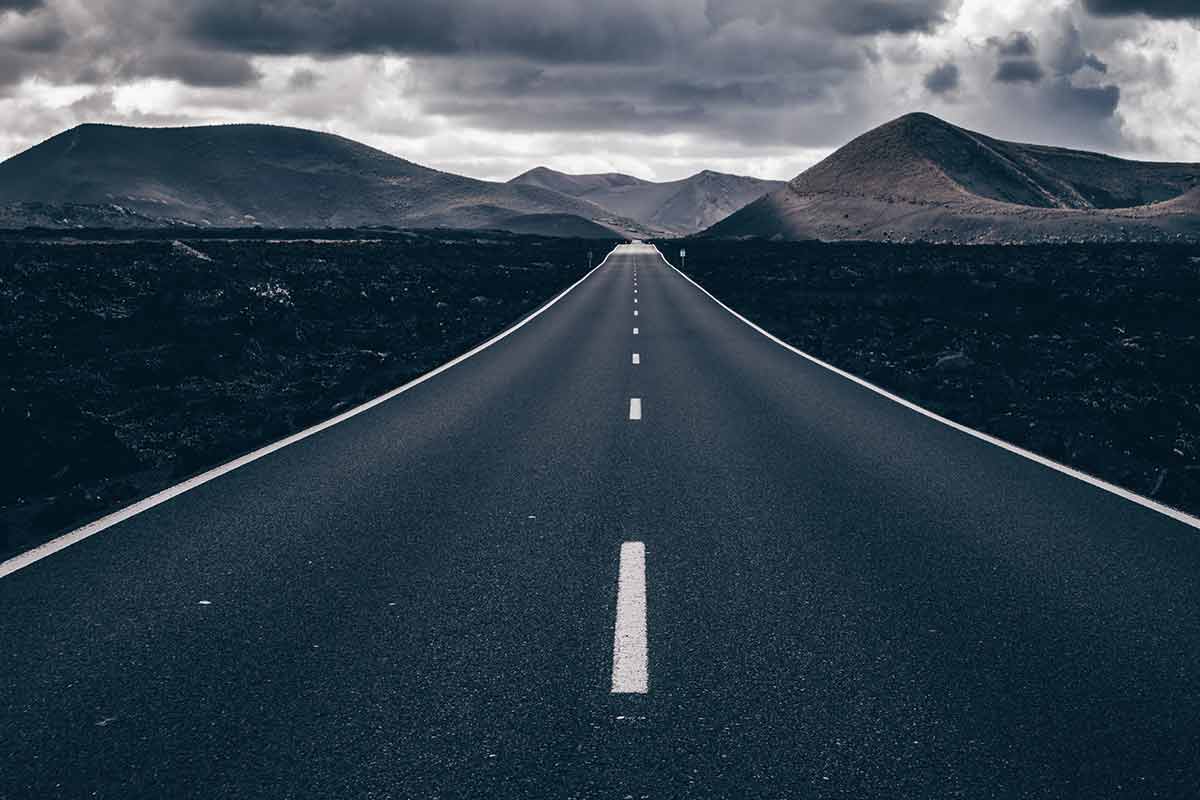
Along its coast are many tourism hot spots with a variety of hotels, bars, restaurants and entertainment. Away from the coast, Lanzarote is dotted with quiet villages that are well worth exploring. Drop into a local café or bar in a village and have a barraquito, a layered coffee-based drink featuring thick and sweet condensed milk, Licor 43 and frothy milk served with lemon zest, and sit back and enjoy the slower pace of life.
There are numerous water sports on offer along the coast and opportunities for hiking and climbing through the island’s volcanic centre for those seeking more adventure. The island is rich in culture and the arts. Cesar Manrique, an architect and artist, was born on Lanzarote and spent much of his creative life adding areas of outstanding creativity, beauty and intrigue to the island. All of his locations are open to the public, and there are many other artists’ sculptures and works of art dotted across the island. It’s the perfect island to visit for a relaxing holiday or a breakaway with the family. These things to do in Lanzarote will get you excited about visiting.
Contents
- Lanzarote, Canary Islands
- 21 Things To Do In Lanzarote
- 1- Visit Museo de la Pirateria
- 2- Hike Timanfaya
- 3- Marvel At Charco de los Clicos
- 4- Admire The Architecture Of Mirador del Rio
- 5- Wander Around Jardin de Cactus
- 6- Gaze In Wonder At Jameos del Agua
- 7- Explore Cueva de los Verdes
- 8- See The Underwater Sculptures Of Atlantico Museum
- 9- Enjoy The View At Mirador de Haria
- 10- Discover The Natural Pools Of Los Charcones
- 11- Visit Fundacion de Cesar Manrique
- 12- Relax At Playas de Papagayo
- 13- Discover History In Teguise
- 14- Explore Haria
- 15- Learn About Salinas de Janubio
- 16- Go On A Wine Tour
- 17- Visit The Museum of International and Contemporary Art
- 18- Shop At Teguise Market
- 19- Discover Playa Blanca
- 20- Ride A Camel Along The Volcano
- 21- Explore Arrecife
- 21 Things To Do In Lanzarote
Lanzarote, Canary Islands
21 Things To Do In Lanzarote
1- Visit Museo de la Pirateria
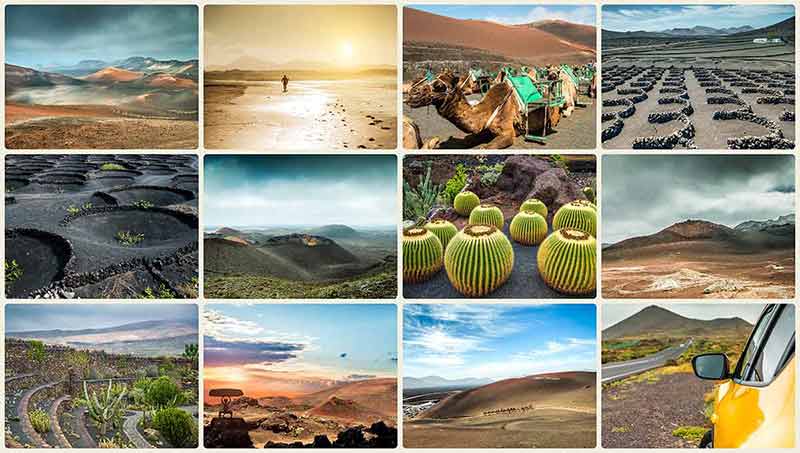
Lanzarote’s Pirate Museum is nestled inside the thick stone walls of Santa Barbara Castle, which is on top of Mount Guanapay, another of the island’s volcanos.
Agustin de Herrera y Rojas built the castle in the 15th century as an impregnable refuge from pirate attacks that were devastating the island.
The castle was designed as a watchtower over both land and sea and a safe haven to protect locals.
Within the museum are exhibitions that focus on piracy on Lanzarote, spotlighting the castle’s location near Teguise and piracy across the Canary Islands.
There are models of the old town, examples of weapons and information on the most important plunders Lanzarote saw during the 16th and 17th centuries.
Museo de la Pirateria is at Castillo de Santa Barbara, Teguise.
2- Hike Timanfaya
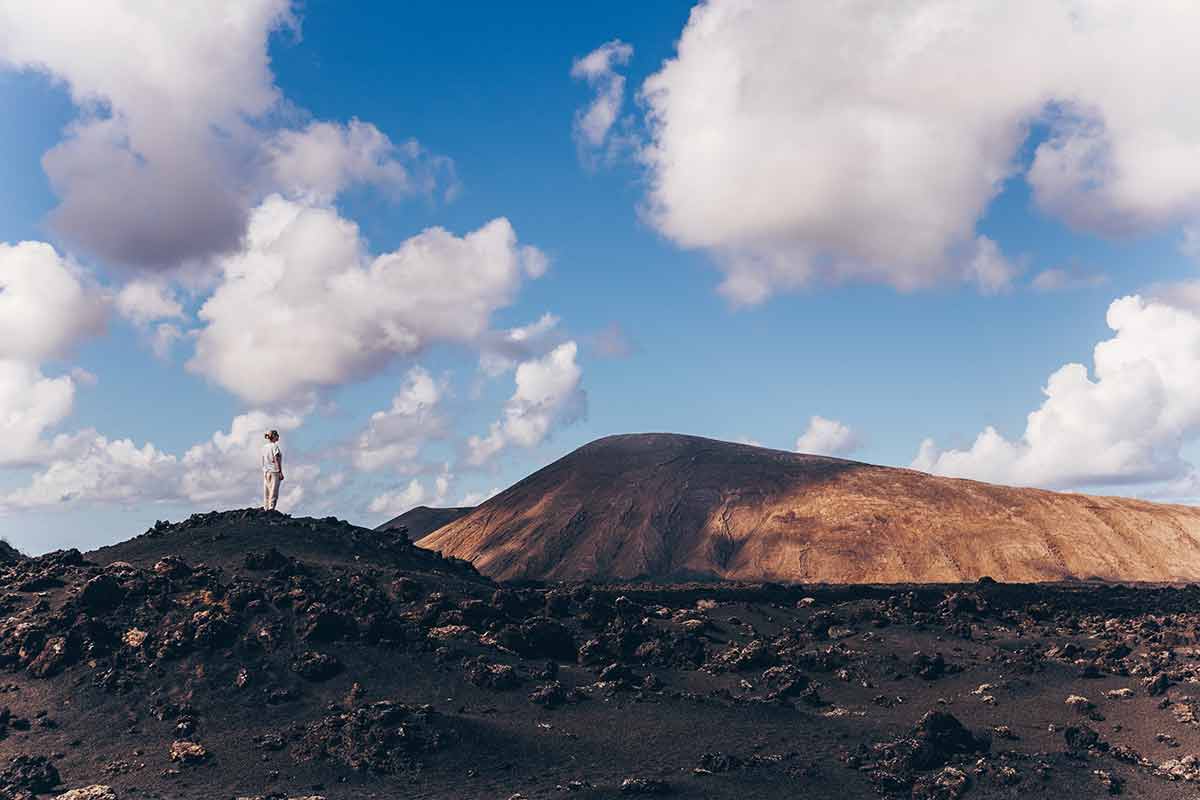
The Timanfaya volcano sits in the centre of Parque Nacional de Timanfaya, surrounded by rugged and darkly coloured terrain that shows evidence of past eruptions.
The volcano itself is accessible through several routes and it’s possible to hike to the top of the volcano.
Several local companies offer guided hiking tours to guide you along the best and most beautiful tracks while the guides share information on the volcano and the surrounding parkland.
Camel rides are a unique way to reach the summit, and for those looking for a more comfortable ride, bus tours are also available.
At the summit of Timanfaya is a restaurant where steaks are cooked over hot stones heated up by the volcano.
Timanfaya is at 1, 35560 Tinajo.
3- Marvel At Charco de los Clicos
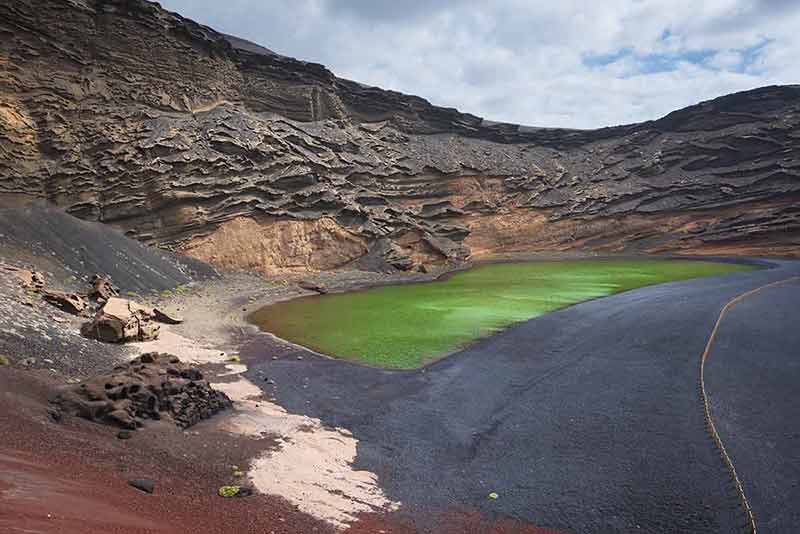
One of the more unique natural landmarks in Lanzarote is the bright green waters of Charco de los Clicos, a pool of water that formed in the crater of a long-extinct volcano flooded by the Atlantic Ocean.
The water’s vivid green colour comes from the algae that live at the bottom of the crater.
Charco de los Clicos is a popular location for photographers.
The vivid colour is striking against the usually bright blue skies, deep black sands of El Golfo beach and black and orange volcanic rocks surrounding it.
Charco de los Clicos is at 35570 Yaiza.
4- Admire The Architecture Of Mirador del Rio
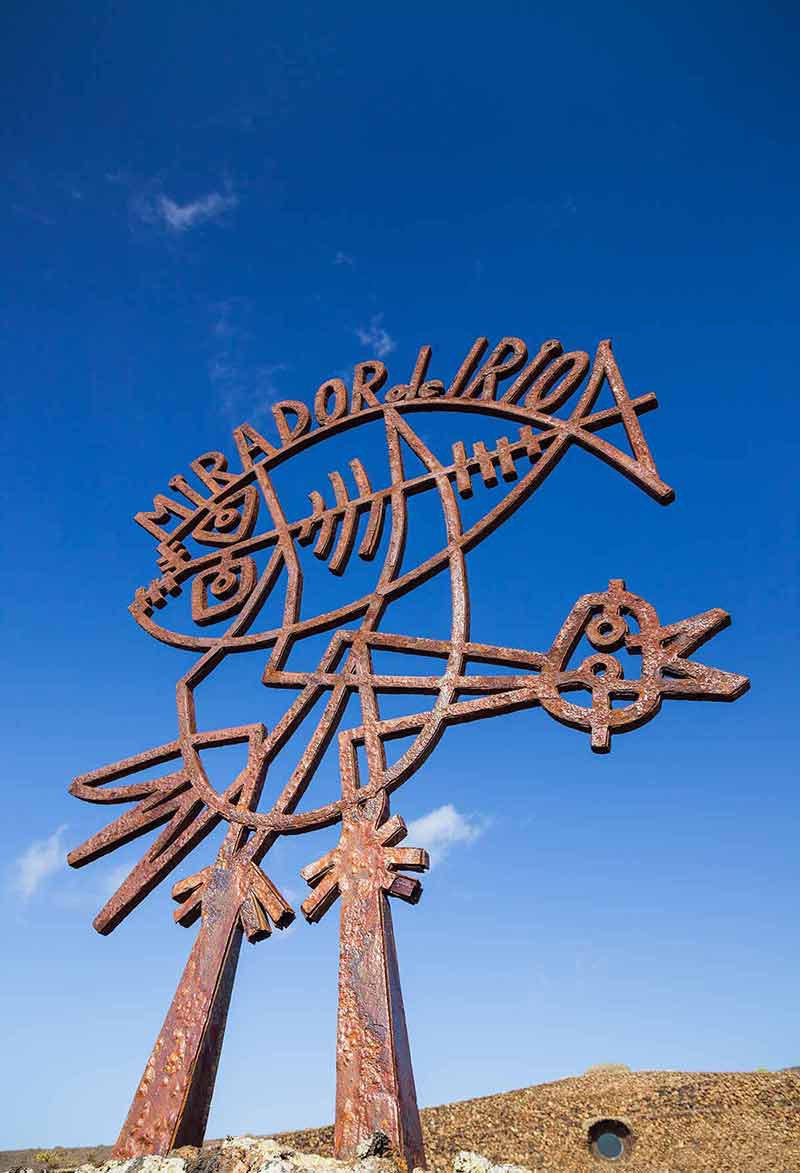
Mirador del Rio is one of the most magnificent architectural creations by Lanzarote-born architect and artist Cesar Manrique.
The viewpoint is high up on Risco de Famara at 474m (1555ft) in the island’s north.
Mirador del Rio offers spectacular views across the Parque Natural de Archipielago Chinijo, the island of La Graciosa and the landscape surrounding Risco de Famara.
The building is inside an old military battery dating from the 19th century.
Manrique disguised the battery with local rocks to camouflage it.
Inside, the walls are curved with purposely placed windows to allow visitors to see the most beautiful snapshots of the surrounding landscape.
Mirador del Rio is at Carreta e Ye, S/N, 35541 Haria.
5- Wander Around Jardin de Cactus
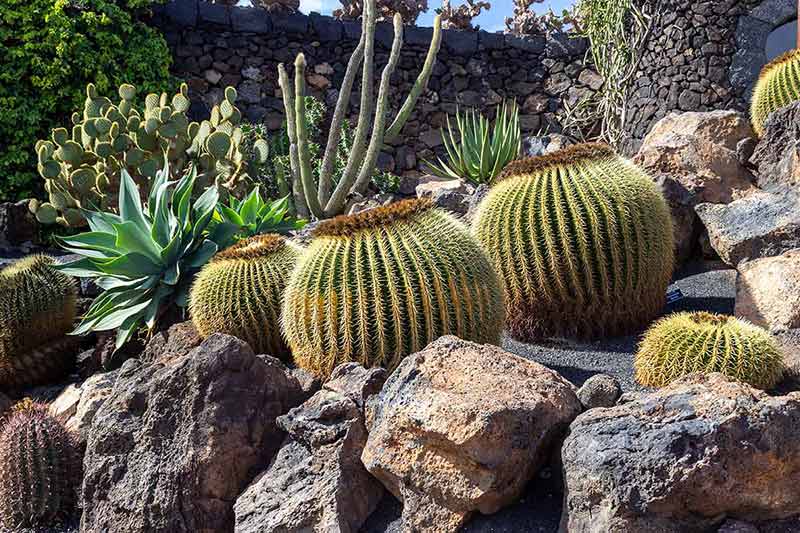
Jardin de Cactus is the last great invention of Cesar Manrique, who transformed an old rofera, or quarry, into a beautiful garden filled with cacti from Lanzarote and beyond.
The garden is surrounded by the largest plantation of prickly pears on the island.
Inside it is filled with more than 4500 cacti of more than 450 species.
By filling in the gaps between the cacti with small chunks of volcanic rock, Manrique created a beautiful contrast between the colours of the landscape, plants and vibrancy of the sky.
There are regular reminders that despite its location in a quarry, the cactus garden is also part of a volcanic island with huge volcanic monoliths dotted around the garden and at its entrance.
Jardin de Cactus has a small restaurant serving local delicacies, and there is also a plant shop specialising in cacti.
Jardin de Cactus is at Av. Garafia, 35544 Guatiza.
6- Gaze In Wonder At Jameos del Agua
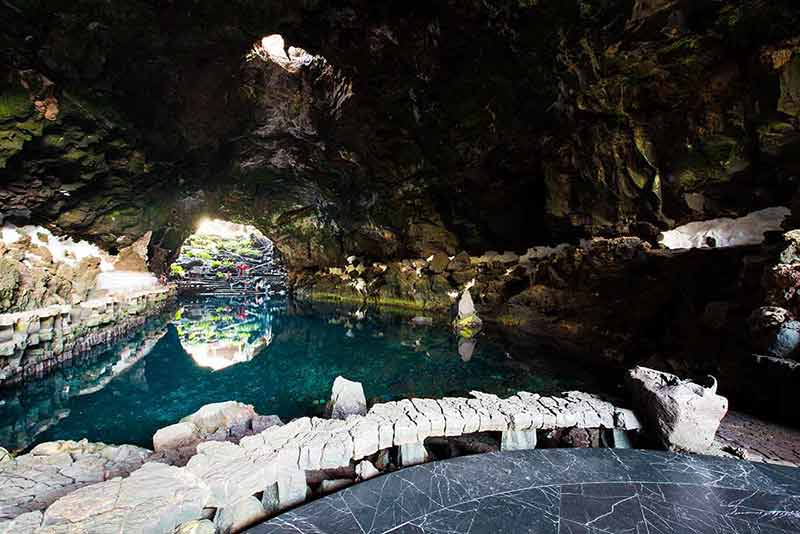
Another of Cesar Manrique’s spectacular creations is Jameos del Aqua, which was created inside the collapse of a volcanic tube in which lava once flowed from the Corona Volcano.
Central to many of Manrique’s creations is the harmony between nature and artistic creation, which can undoubtedly be seen at Jameos del Agua.
This unique location is surrounded by thick and lush green ferns frequented by local species of songbirds.
Man-made pools in bright white stone are filled with crystal clear sapphire waters with tall palm trees offering pockets of shade.
Heading further down into the lava tube takes visitors through levels of plants that almost feel Jurassic in the volcanic surroundings.
Inside the lava tube is a small lagoon filled with blind white crabs, an endemic island species.
They access the pool through the tunnel of Atlantis, which leads straight to the Atlantic Ocean.
Jameos del Agua is at LZ 204, Parcela 109, Carretera Arrieta-Orzola S/N Lanzarote, 35542 Punta Mujeres.
7- Explore Cueva de los Verdes
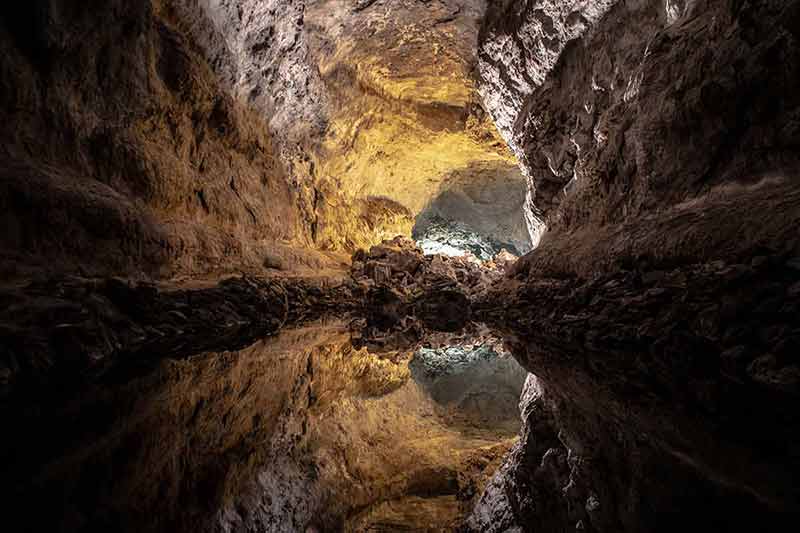
Cueva de los Verdes was created by La Corona Volcano and is one of the longest volcanic caves on earth.
It consists of at least 16 lava caves along its length and the passageways of Cueva de los Verdes stretch for more than 6 km (3.7 miles).
The underground passages stretch out to sea.
One underwater section stretching for 1.5 km (0.93 miles) is known as the ‘Tunnel of Atlantis’ and connects Cueva de los Verdes and Jameos del Agua with the ocean.
Tours of the tunnel are guided and take visitors into many of its smaller lava caves, including one transformed into a venue for musical performances.
Cueva de los Verdes is at 35542 Lanzarote.
8- See The Underwater Sculptures Of Atlantico Museum

Atlantico Museum is the only museum in Europe to be completely underwater.
Jason deCaires Taylor designed numerous sculptures to be displayed in this unique museum.
The museum is a dive site off the coast of Playa Blanca and is only accessible by diving.
In order to open the museum to as many people as possible, diving instruction is offered, allowing both seasoned divers and beginners the opportunity to experience this unique work of art.
Atlantico Museum is at Centro Comercial La Mulata, C. Lanzarote, 1, 35580 Playa Blanca.
9- Enjoy The View At Mirador de Haria
Another spectacular viewpoint in Lanzarote is Mirador de Haria, a viewpoint in the north of the island recently transformed into a tourist attraction and environmental space.
Miguel Angel Fontes, a Lanzarote architect, transformed the long-abandoned space into a spectacular location that offers the best views over the town of Haria and the surrounding area.
To further support the location, a visitor centre offers information on the local area, its endemic flora and fauna, architecture, and the town’s history.
Mirador de Haria is at 35542 Haria.
10- Discover The Natural Pools Of Los Charcones
Los Charcones is a true hidden gem in Lanzarote.
The natural swimming pools are formed in a group of coves close to the Pechigera Lighthouse.
The pools vary in depth, with some deep enough to be suitable for freediving while others are more suited to paddling.
The area is very tranquil, making it a great place to relax away from the busier beaches and pools.
Los Charcones is at 35570, Lanzarote.
11- Visit Fundacion de Cesar Manrique
Following his return from New York City, Cesar Manrique designed the spectacular volcanic house now named Fundacion de Cesar Manrique.
Manrique returned to the island to permanently reside there, and the house was his home for 20 years.
The house is built inside a lava coulee formed during the violent six-year eruptions from 1730 to 1736.
It covers 3000 square metres (32291 square feet) and blends seamlessly into its natural surroundings.
The upper story design incorporates traditional design elements from the island mixed with expansive windows and large rooms.
The lower story of the home is built within five natural volcanic bubbles creating a unique yet stunning living environment.
Fundacion de Cesar Manrique is at Taro de Tahiche, C/ Jorge Luis Borges, 16, 35507, Tahiche.
12- Relax At Playas de Papagayo
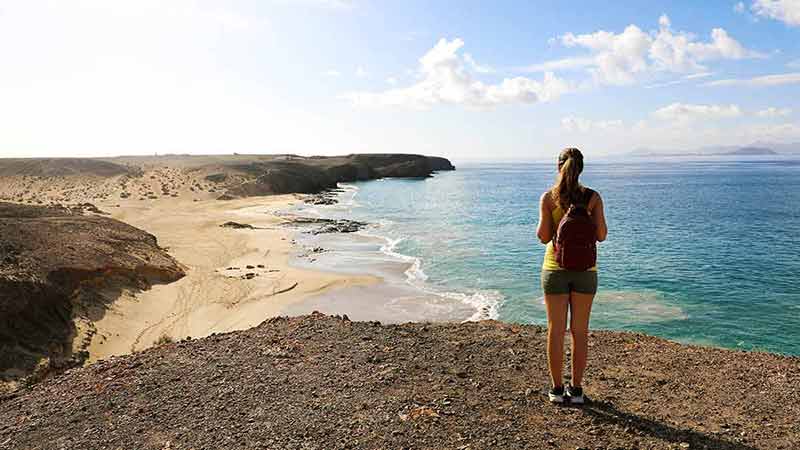
One of the most alluring white-sand beaches in Lanzarote is the shell-shaped Playa de Papagayo in the island’s south.
The water at this beach is crystal clear and emerald green in colour, making it inviting to swim and snorkel in.
Thanks to the walls of the cove, the beach is largely sheltered from the wind.
A small beach bar serving drinks and snacks is on the hillside above the beach.
The beach is usually busy during the late morning and early afternoon, making early to late evening the best time to visit.
Playa de Papagayo is at C. Playa Papagayo, 35570, Playa Quemada.
13- Discover History In Teguise
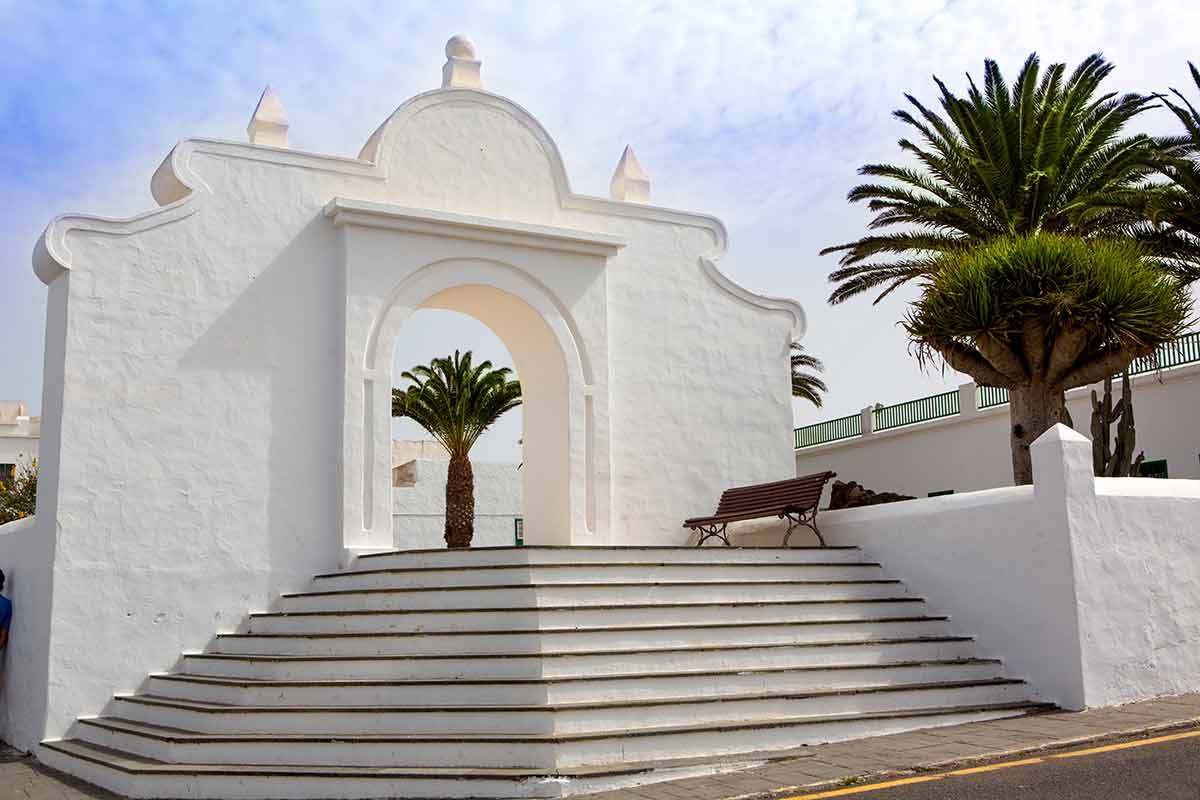
Teguise is one of the Canary Islands’ oldest towns and the capital of Lanzarote for more than 450 years until 1852 when Arrecife became the capital city.
The town is 10 km (6 miles) from the coast and is amidst a stunning volcanic landscape.
The town is tranquil and offers a true feeling of what life on Lanzarote is like for a local.
The streets are narrow and filled with old architecture and historical buildings.
Head to the church of Nuestra Senora de Guadalupe in the centre of town for an example of old Lanzarote architecture.
The 15th century was largely destroyed in a fire in 1909.
Local residents donated money to save the church and it was reconstructed and opened again by 1914.
14- Explore Haria
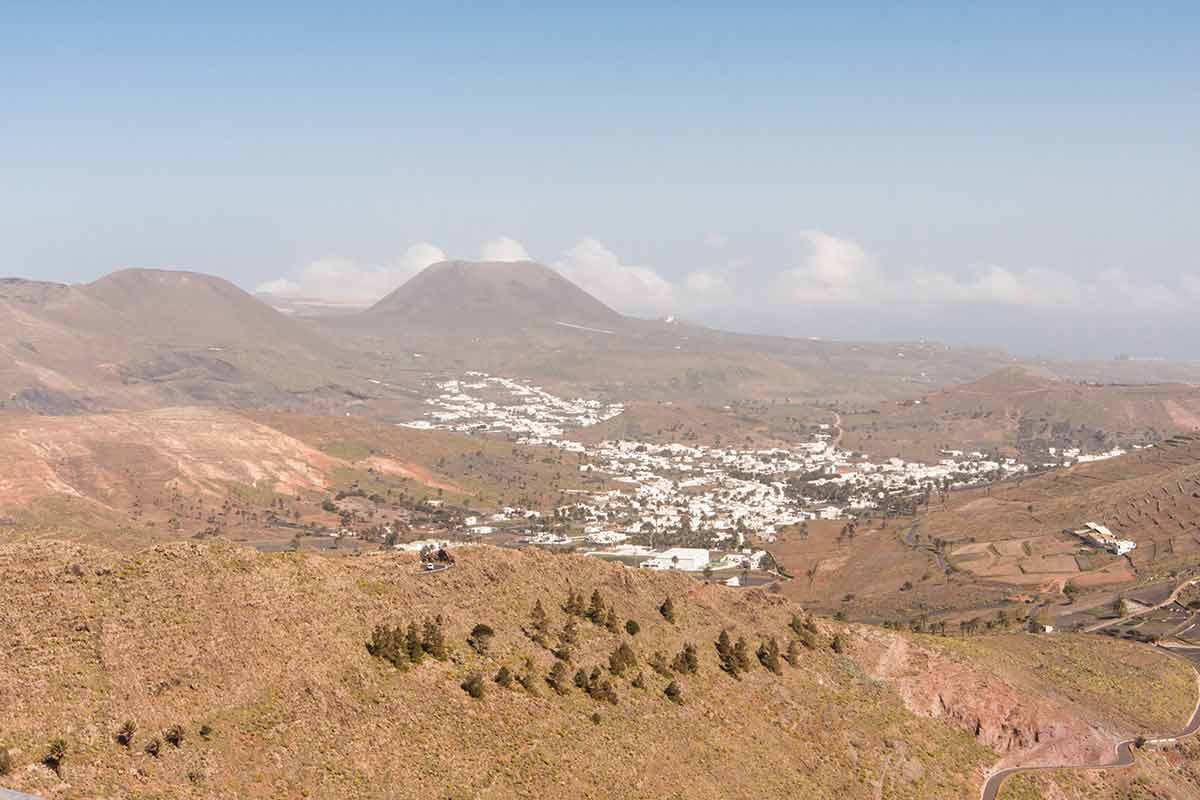
Haria is a small village in the Valley of the 1000 Palms in northern Lanzarote inhabited by just 1000 residents.
Local legends tell of families from history planting a new palm tree in the valley each time a child was born; two trees for a boy and one for a girl.
Whatever the reason for its numerous palm trees, this small hidden village is nestled in one of the island’s greenest and most spectacular locations.
The village is not touristy, and visitors will get a true feel for what life is like on the island.
Manrique loved the village so much that he spent the last years of his life there and is buried in the local cemetery.
Cesar Manrique’s house, now a museum, is also in this village.
On Saturdays, market stalls fill the village offering handmade souvenirs, objects and food and drinks.
The spectacular Mirador de Haria is a 90-minute hike away through the valley.
Haria is at 35520 Lanzarote.
15- Learn About Salinas de Janubio
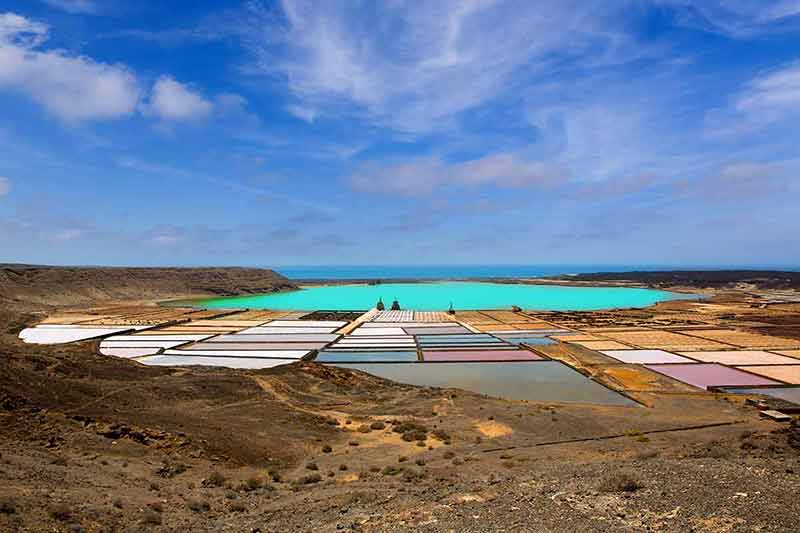
Salinas de Janubio is Lanzarote’s salt flats in the south of the island.
The six-year-long volcanic eruption in the 1730s created a natural lagoon that, when its waters had evaporated, formed the salt flats in 1895.
Miners extract up to 15,000 tons of salt from the salt flats.
The salt is mainly used to preserve fish caught off the coast of the island but has also been used to make dyes used by local artists.
Walking towards the ocean from the salt flats is Janubio Beach, an incredible stretch of 800m (2624ft) of black sands with volcanic outcrops.
Due to its strong currents, Janubio beach is not suited for swimming.
Salinas de Janubio and Beach is at 35570 Lanzarote.
16- Go On A Wine Tour
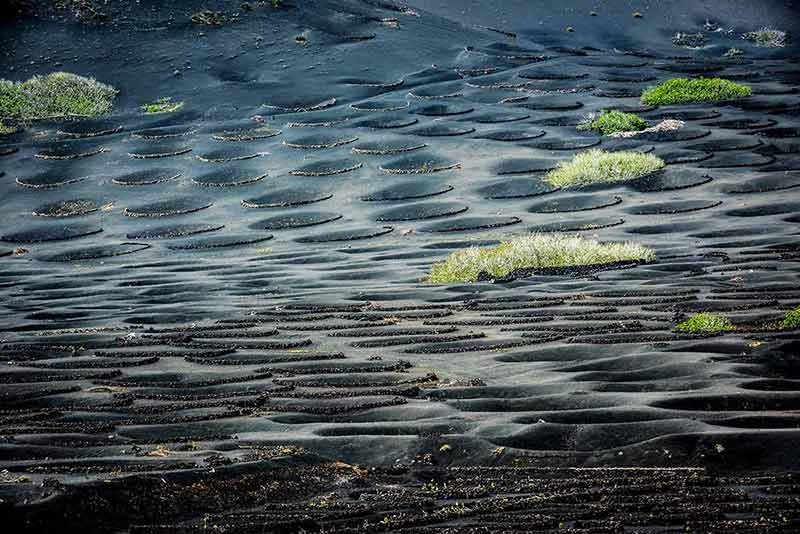
Thanks to its incredibly fertile land, grapes are grown across the island, resulting in some spectacular wines being created.
Head out on a guided wine tour of one or more of the island’s vineyards to experience the unique growing conditions and, of course, sample some of the island’s best wines.
Vines are grown in funnel-shaped holes dug by farmers in the volcanic ash layer.
Underneath the ash is a thick layer of volcanic soil which provides the vines with everything they need to grow while being protected by the edges of the hole and the wall built around it.
Many wine tours begin at your hotel, with most vineyards collecting visitors for their excursion, so speak to your hotel or the local tourist information centre for information about wine tours during your stay.
Wine Tours are available in various locations across the island.
17- Visit The Museum of International and Contemporary Art
Lanzarote’s Museum of International and Contemporary Art occupies the old military fortress of Castillo de San Jose.
King Carlos III ordered the fortress be built between 1776 and 1779 to serve as a defence from the pirates plaguing the island.
A couple of centuries later, Cesar Manrique organised and orchestrated the refurbishment of the castle following its abandonment.
The castle became a museum in 1975 to ‘promote, gather and exhibit the most significant works of modern artistic creation’.
Inside the museum is a collection showcasing the works of Canarian artists and a dedicated exhibition to Lanzarote artist Pancho Lasso.
There are also temporary exhibition spaces where works regularly change.
Museum of International and Contemporary Art is at Calle Triana, 38, 35500 Arrecife.
18- Shop At Teguise Market
The Sunday market in Teguise is the largest market in Lanzarote and possibly in the Canary Islands.
The market is so popular that it is easy to get to without a car, as local buses travel exclusively to the market on Sundays and some hotels also offer excursions to the market.
The market has stalls selling local food and drink, handmade trinkets, artworks and souvenirs.
Close to the church, a Canarian dance and music display is held, with performers wearing traditional Canarian clothing.
Teguise Market is at Pueblo Marinero, Costa Teguise.
19- Discover Playa Blanca
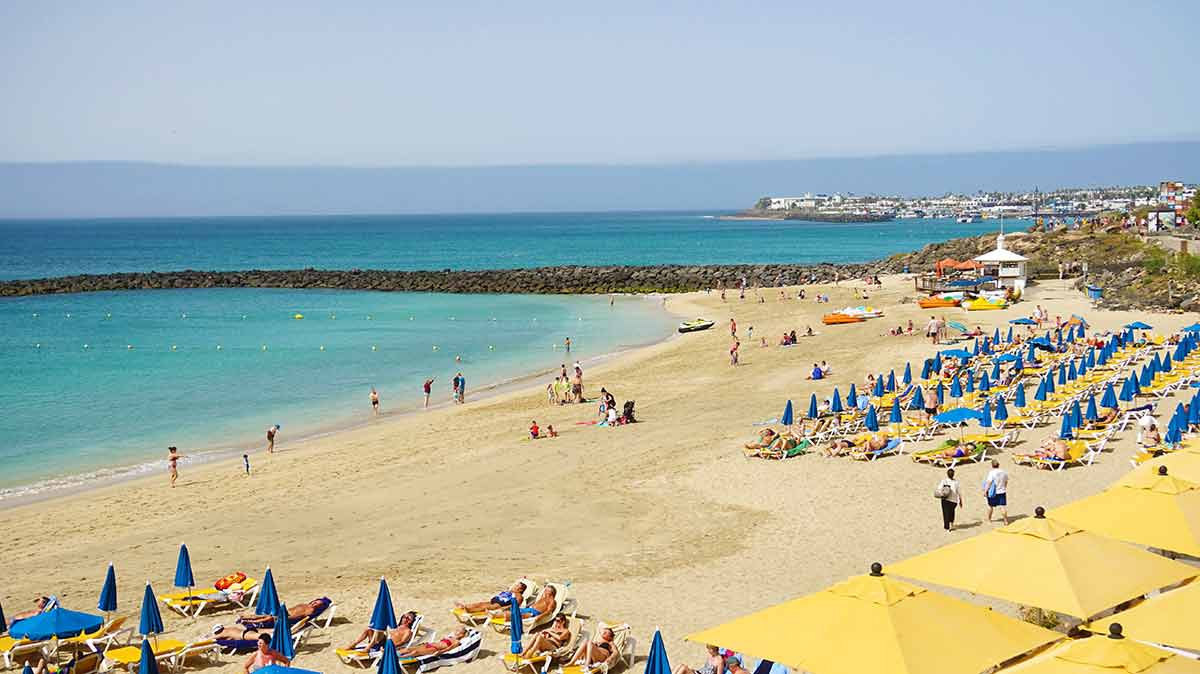
Playa Blanca is Lanzarote’s southernmost resort region.
The area was once a tiny fishing village but is now a popular resort location with many hotels, bars, restaurants and golden sandy beaches.
Playa Blanca’s coastline has three beaches: Playa Blanca, Playa Dorada and Playa Flamingo.
All of Playa Blanca’s beaches are golden and have access to shops and restaurants.
Stroll along Paseo Maritimo, a walkway bordered by cacti, palm trees and local flora, with incredible views out to the ocean.
Playa Blanca is at 35580 Playa Blanca.
20- Ride A Camel Along The Volcano
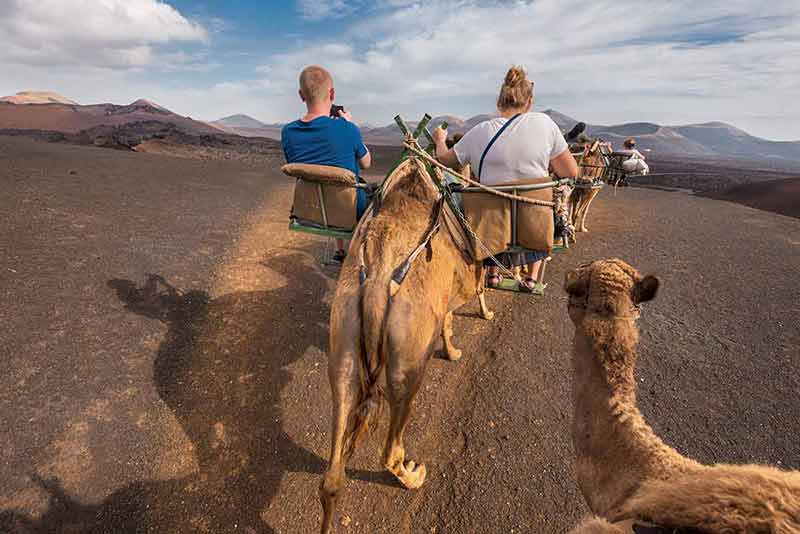
For a unique way to explore the volcanic landscape of Timanfaya National Park, why not scale the volcano on a camel?
Camel rides with Echadero de los Camellos last approximately 20 minutes and takes in a small area of the volcanic park.
The camels walk along a well-worn track at their own pace, creating a relaxing way to travel. And they are very well cared for and looked after.
Close to Echadero de los Camellos is an interactive museum offering visitors an insight into the inner workings of volcanos and how prior volcanic eruptions have impacted the island’s landscape.
Echadero de los Camellos is at LZ-67, 35570 Lanzarote.
21- Explore Arrecife
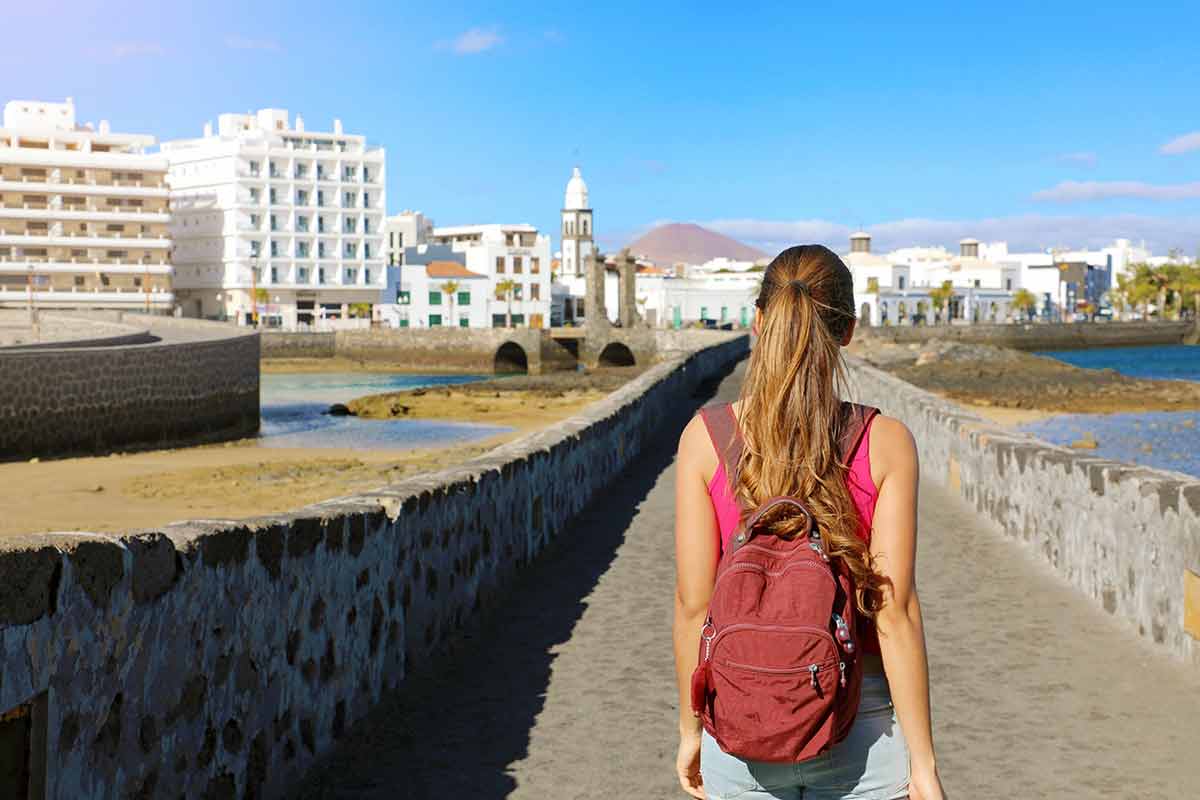
Love Spain? Read these posts:
- 27 Spanish Shows On Netflix
- 20 Fairytale Castles In Spain
- 30 Landmarks in Spain
- 20 Places To Visit In Spain In Winter
- 20 Best Beaches In Spain
- An Amazing Andalusia Road Trip
- 20 Things To Do In Ibiza
- 20 Things To Do In Tenerife
- 21 Things To Do In Lanzarote
- 21 Spanish Drinks To Try
- 20 Things To Do In Madrid At Night
- 20 Day Trips From Madrid
- Best Time To Visit Spain
- 20 Cities in Spain
- Renting A Car In Barcelona
- 20 Things To Do In Seville
- 20 Things To Do In Granada
- 20 Things To Do In Zaragoza
- 20 Things To Do In Palma
- 20 Tours In Spain
- 20 Things To Do In Alicante
- 20 Spanish Food / Dishes
- 20 Things To Do In Ronda
- 20 Things To Do In Cadiz
- 20 Thing To Do In Benalmadena
- 20 Things To Do In Torremolinos
- 20 Landmarks In Barcelona
- 5 Day Trips From Barcelona
- Barcelona Bike Tour
- 10 Things To Do In Bilbao
- 12 Things To Do In San Sebastian
- 10 Things To Do In Oviedo
- Storybook Village of Santillana del Mar
- 20 Things To Do In Gran Canaria
- 20 Things To Do In Barcelona At Night
- Christmas in Spain
- 20 Things To Do In Malaga
- 20 Things To Do In Marbella
- 20 Things To Do In Valencia
- Where To Stay In Valencia
- Ibiza At Night
- 20 Things To Do In Ibiza
- 20 Things To Do In Toledo
- Where To Stay in Barcelona
- 20 Things To Do In Segovia
- Where To Stay in Tenerife
- Where To Stay in Madrid
- Where To Stay In Mallorca
- Where To Stay In Ibiza
- 15 Things Spain Is Famous For
Plan Your Trip
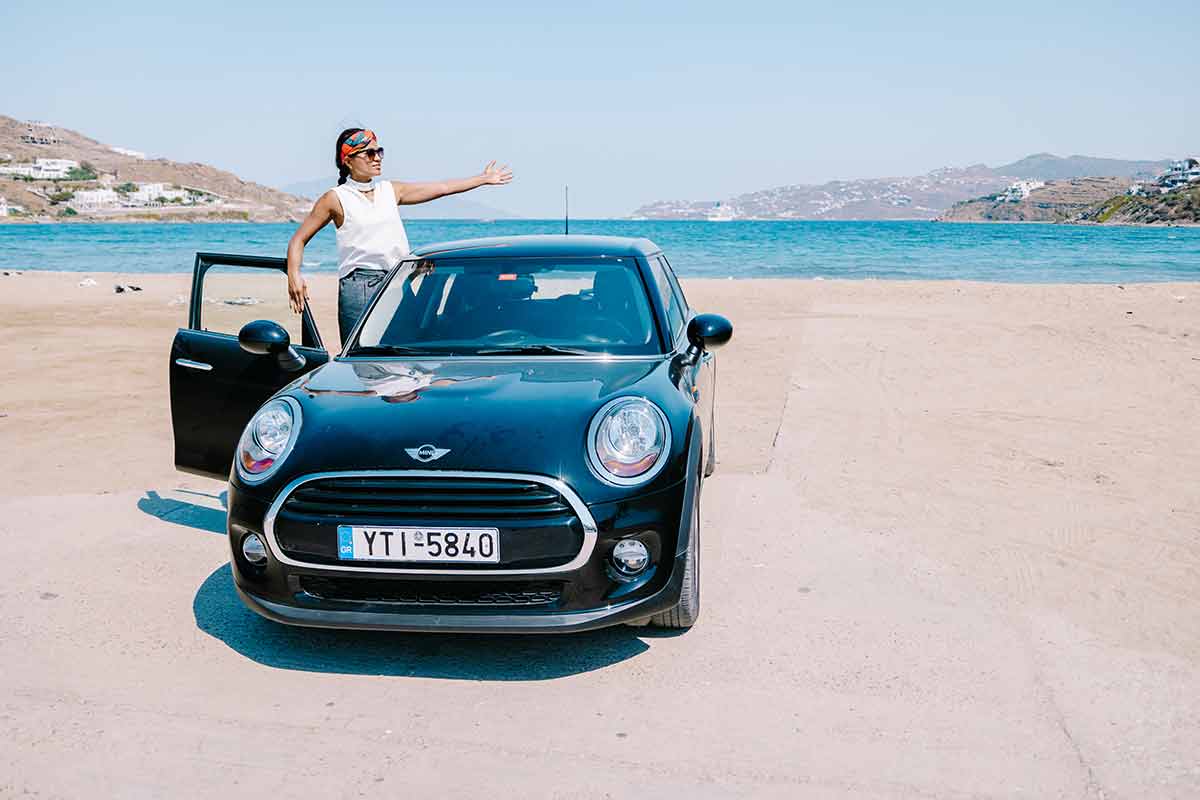
Rent A Car – Find the best car rental rates at Discover Cars. They compare car hire companies to provide you with the best deal right now.
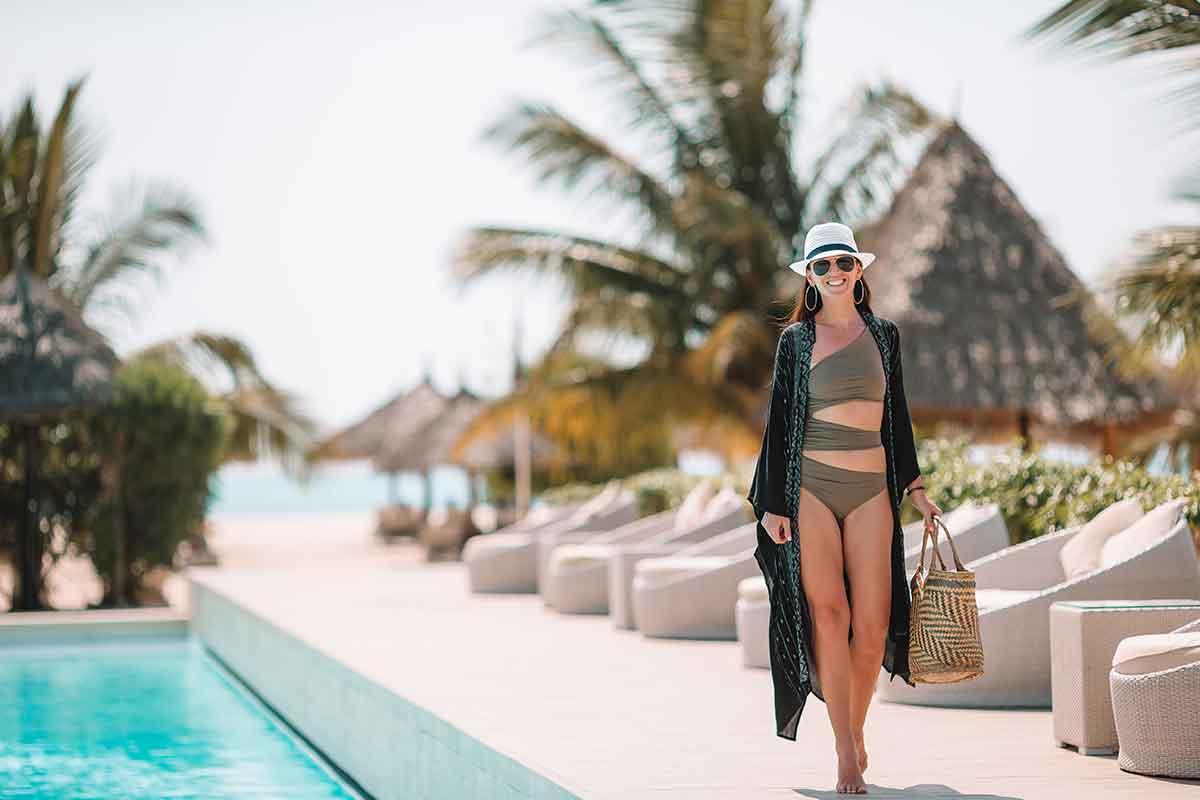
Find A Hotel – If you’re curious about this article and are looking for somewhere to stay, take a look at these amazing hotels.
